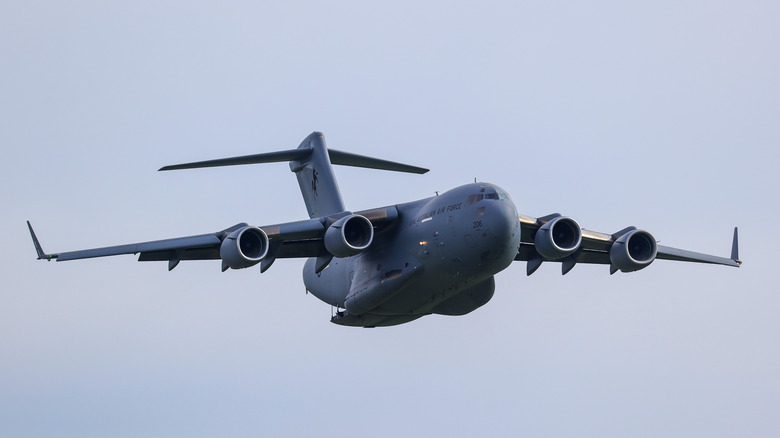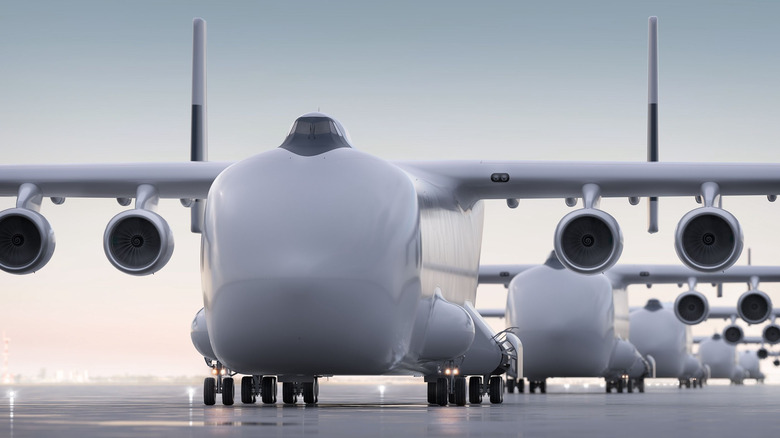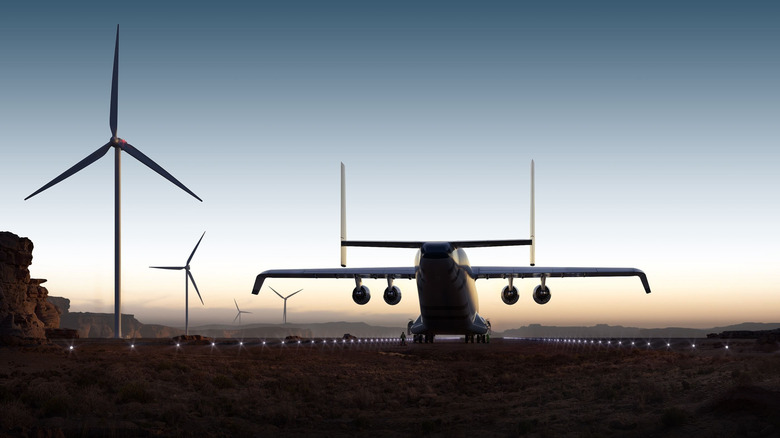The US Military's New Cargo Plane Has 12 Times More Space Than A C-17
The U.S. military is known for having some beastly machines in its ranks. On one hand, you have your comparatively small yet extremely lethal weapon platforms, such as the venerated and equally feared F-35 Lightning II and F-22 Raptor fighter jets, while on the other are behemoths like the USS Gerald R. Ford and the AC-130 gunship by Lockheed Martin. On the side of 'size matters' comes the WindRunner, an ultra-large air cargo aircraft developed by aerospace and energy company Radia, which is currently on track to become the world's largest aircraft.
The WindRunner has already made waves worldwide, not just because it will have ten times the volume of the Boeing 777, but also due to its ability to land on semi-prepared strips as short as 6,000 feet. If that's not impressive enough, Radia has confirmed that the massive aircraft will see applications as both a commercial cargo hauler and a military aircraft, the latter of which is why we are here.
The WindRunner will have 12 times more space than the mammoth Boeing C-17 Globemaster III, a behemoth that has long ruled the skies as the airlift force's most flexible cargo aircraft. While taking on the likes of such a plane might seem like a fool's errand, the WindRunner seems to have what it takes to succeed.
The WindRunner is optimized for volume and payload weight
The C-17 first took to the skies in 1991 and was declared operational by the military just four years later. The plane has always had some impressive specs, from its ability to land or take off on runways as short as 3,500 feet to its ability to turn on runways as narrow as 90 feet. The aircraft has a maximum gross takeoff weight of 585,000 pounds, 170,900 pounds of which contribute to its maximum payload capacity. It has played several crucial roles while in service, from transporting equipment to airdropping paratroopers on missions.
The numbers and years of service showcase the C-17 as a capable craft that has consistently proven its worth over time. However, one of Radia's key selling points for the WindRunner is the craft's optimization for volume and payload weight, which allows it to accommodate a wide variety of military systems, platforms, and vehicles. From mobile hospitals to long-range radars and CCAs, this bird can carry it all. What's even more interesting is that due to its optimizations, the WindRunner can load, transport, and unload many of these equipment packages without the need to disassemble them, and without specialized facilities.
It can carry ten more AH-64 Apaches than the C-17 in a single sortie
A significant amount of time is typically spent disassembling military equipment before it can be loaded and transported. There's also the matter of specialized equipment and personnel that are required for these processes to be successful. What this usually amounts to is time and labor that could have been invested elsewhere being funneled into these processes. It not only opens vulnerability windows but further complicates already complicated schedules. The WindRunner will also feature short takeoff and landing capabilities on about 6,000 feet of unpaved runways, enabling it to operate in areas or regions that would normally be unsuitable for such plane landings or takeoffs.
As of now, the aircraft has been confirmed to offer over 240,139.7 cubic feet of volume, which can support military equipment and entire aircraft, such as the long-serving CH-47 Chinooks, which the WindRunner can accommodate up to six. The aircraft will also be capable of transporting F-35s, F-16s, 12 AH-64 Apache helicopters, and CV-22 Ospreys. To put things into perspective, while the C-17 can only carry two Apache helicopters, the WindRunner can transport up to twelve. Currently, development is ongoing at Radia, with the aircraft's first flights scheduled for the end of the 2020s.


